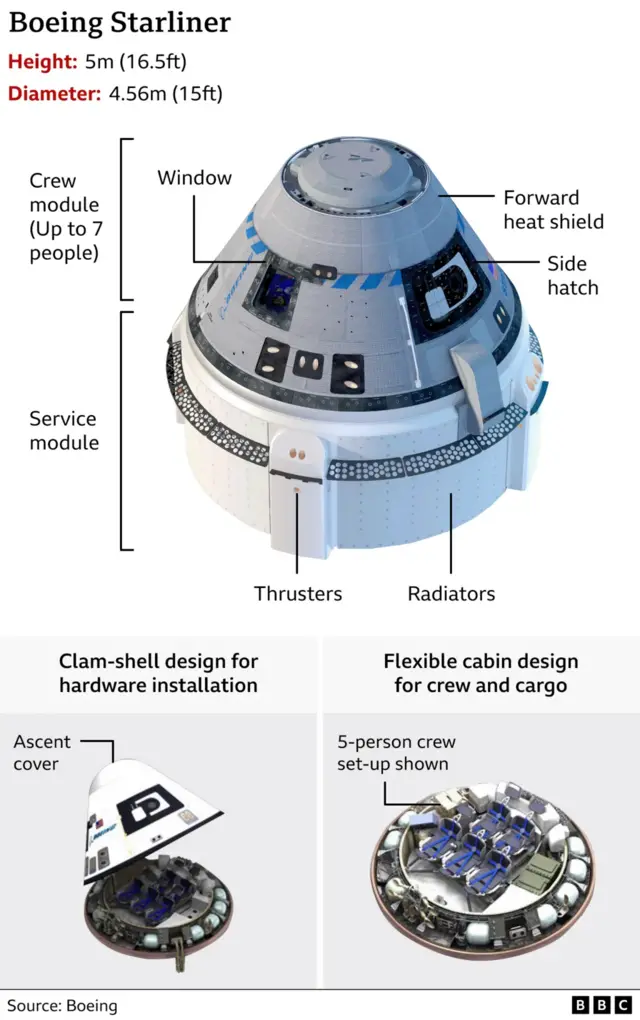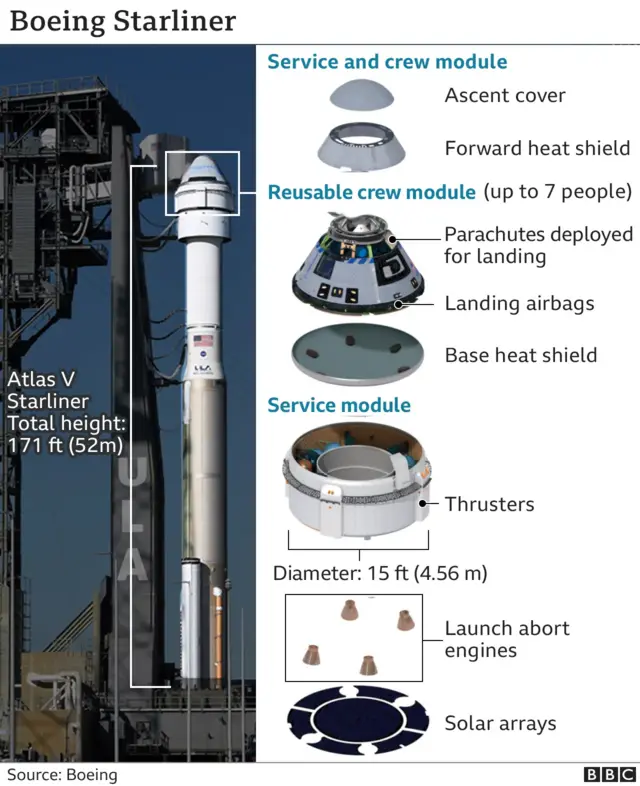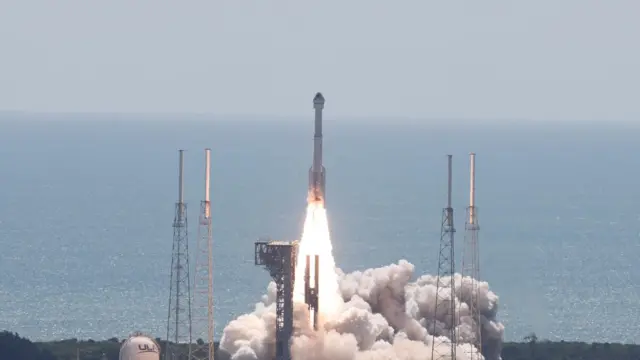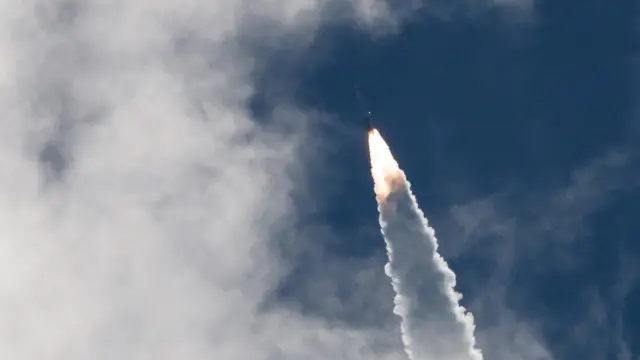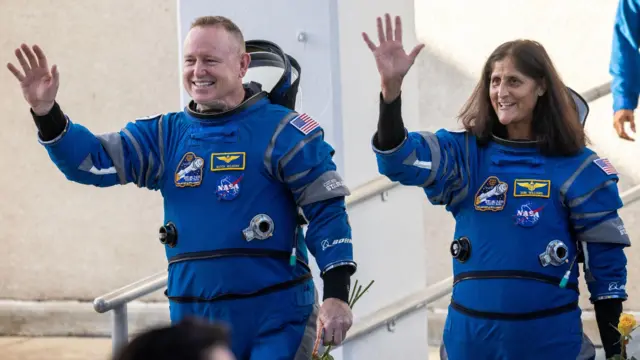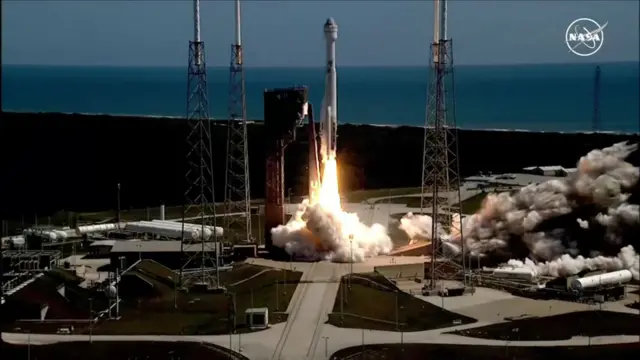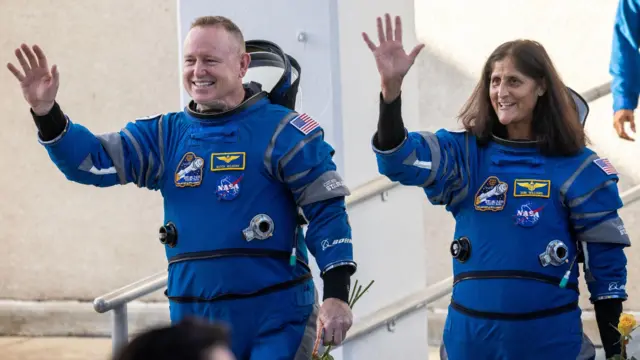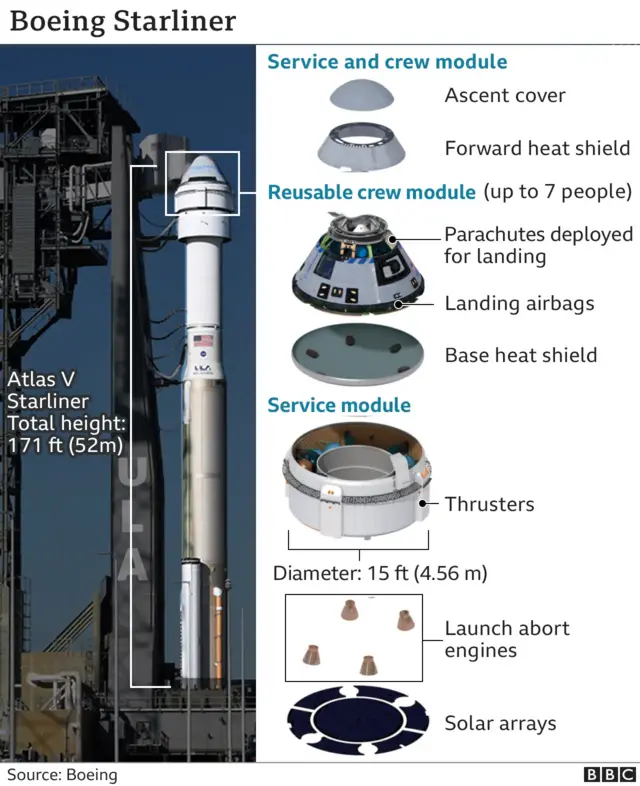Thanks for watching along with uspublished at 17:19 BST 5 June 2024
 Brandon Livesay
Brandon Livesay
US reporter
Moment of liftoff for Boeing Starliner's first crewed mission
The Boeing Starliner is orbiting and on its way towards the International Space Station (ISS).
So, we are finishing up our live coverage of today's launch.
It was the first time the Starliner spacecraft has flown with people onboard - Nasa astronauts Butch Wilmore and Suni Williams.
Starliner is expected to dock at the ISS at approximately 12:15 ET (17:15 BST) on 6 June, and the astronauts will be there for about a week.
So far, the spacecraft's mission has been a success. Remember, it took several years to get to this point because of various engineering issues.
Moments before lift-off, Commander Wilmore called out to thank all those who had worked to make the mission possible. Alluding to past difficulties, he said: "When the going gets tough - and it often does - the tough get going, and you have."
Starliner's pilot Suni Williams chimed in: "Go 'Calypso'! (the name of the capsule). Take us to space and back."
For the full story on today's Starliner launch, check out this article by BBC's science correspondent Jon Amos.
Thanks for following along with us.
